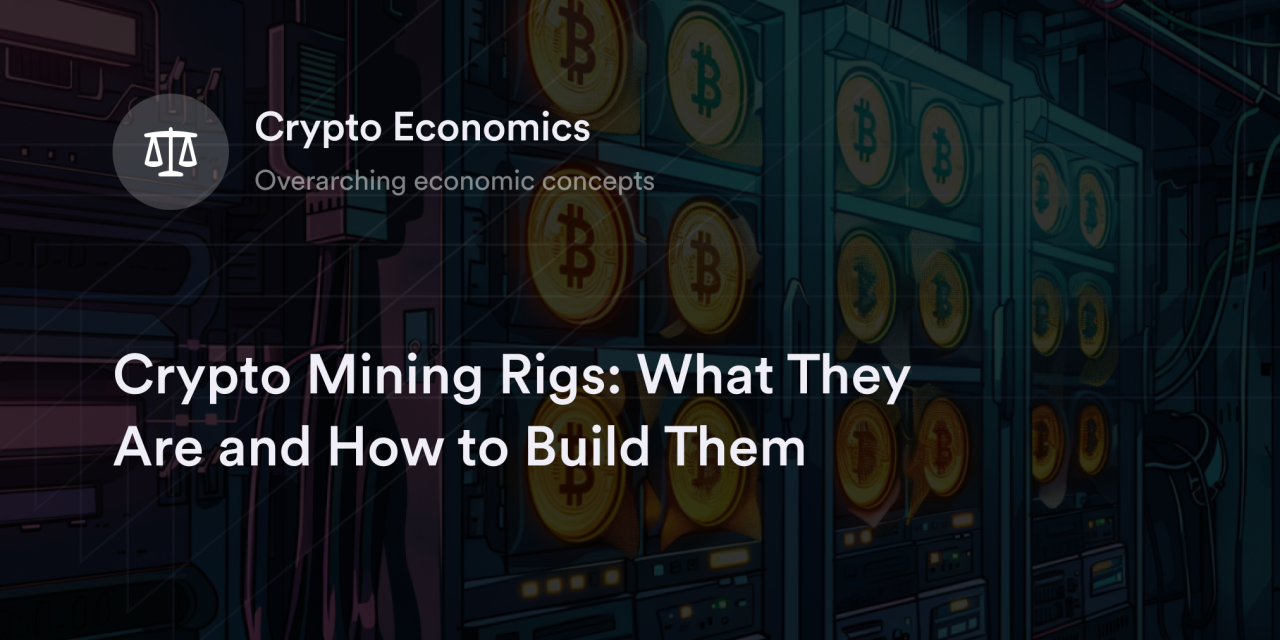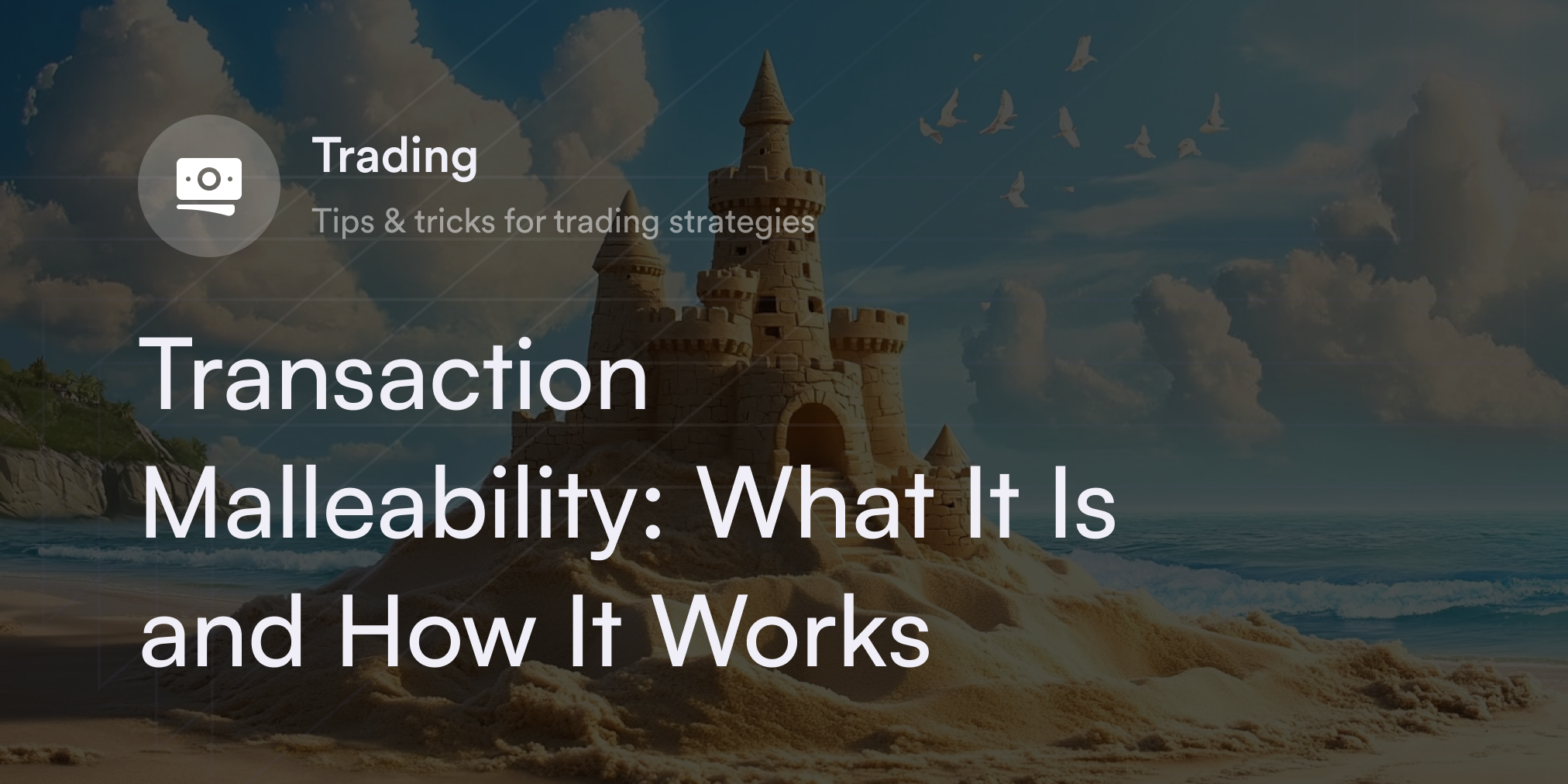


HODLers can't literally hold Bitcoin (BTC) in their wallets, but these digital coins aren't created out of thin air. Every BTC in existence first went through a laborious and energy-intensive process known as crypto mining. Unlike precious metals prospectors, Bitcoin miners don't use pickaxes and shovels to bring new BTC to the market; instead, they rely on specialized tools called crypto mining rigs to compete for a glittering piece of virtual gold. Without these hardware units behind the intricate mining process, coins like Bitcoin, Dogecoin (DOGE), or Litecoin (LTC) wouldn't be possible.
Let’s explore the ins and outs of these indispensable pieces of equipment behind BTC and many leading altcoins, including how to build them.
What is a mining rig?
Mining rigs are machines specifically designed to perform advanced computations for cryptocurrencies using the proof-of-work (PoW) consensus algorithm. These machines have powerful hardware components, including graphics processing units (GPUs) or application-specific integrated circuits (ASICs), to solve complex mathematical problems on PoW blockchains. Mining also gives node operators an advantage in the PoW guessing game, as mining rigs concentrate all their energy on spitting out thousands of responses at lightning-fast speeds.
Why are crypto mining rigs important?
When pseudonymous developer Satoshi Nakamoto launched Bitcoin in 2009, there wasn't a need for specialized mining rigs to process transactions. Since the Bitcoin community was small in the early history of cryptocurrency, the competition wasn't intense, and many of the first BTC miners did fine with the central processing units (CPUs) on their PCs. But as Bitcoin became popular, manufacturers like Canaan Creative and Bitmain introduced ASIC-powered mining rigs with increased efficiency, and crypto miners began gravitating toward these units.
Since many PoW blockchains now use expensive ASIC or GPU mining rigs for superior processing, it's often cost-prohibitive for hackers to successfully take more than 51% of a blockchain and steal cryptocurrency, enhancing network security. Also, the reliability and speed of professional mining rigs positively impact the accuracy and efficiency of processing crypto transactions, potentially streamlining daily operations and scalability efforts.
How to build a mining rig: 4 steps
Although many professionally manufactured mining rigs are available on the market, some tech-savvy crypto enthusiasts enjoy the challenge of building one of these specialized computers at home. While having a background in computer science or engineering helps when making a DIY mining rig, crypto enthusiasts must follow four basic steps if they're serious about setting up crypto mining.
1. Define goals and budget expectations
Before building a mining rig, run a preliminary cost analysis to figure out the most financially sound PoW cryptocurrency. Factor in budget constraints like the initial hardware investment and monthly energy costs to determine the minimum crypto rewards necessary to make this venture profitable. Clarity in facts and figures early on helps determine whether using a mining rig is worth the effort.
2. Choose the right hardware and assemble
While there's room for customization when designing a DIY mining rig, most of these units include a few essential hardware features:
GPUs or ASICs: These circuits are the reason behind a crypto mining rig's exceptional processing power. Choosing between GPUs and ASICs depends on algorithmic parameters on a PoW cryptocurrency's blockchain and whether you want to make your coin more compatible with one of these units. For example, some PoW coins like Monero (XMR), ZCash (ZEC), and Ethereum Classic (ETC) have GPU-compatible algorithms, while Bitcoin, Litecoin, and Dogecoin work better with ASICs.
CPUs: Although GPUs and ASICs handle the computational heavy lifting, CPUs download and run a rig's mining software and ensure smooth system-wide operations. Some miners also use CPUs to monitor and maintain rig performance by troubleshooting issues and scanning key performance indicators (KPIs) like total power consumption.
Motherboard: A rig's motherboard is a central communication pathway for various hardware components––thanks to its multiple slots for elements like GPUs, cooling units, and CPUs. Elements within a rig physically attach and integrate through the motherboard, efficiently distributing energy throughout the system.
Random access memory (RAM): A rig's RAM provides the necessary memory space for an operating system (OS), which is crucial for data storage and communication between the rig's components.
Power supply units (PSUs): PSUs provide mining rigs electrical power, making it possible to find options with the highest efficiency and cut energy expenditure. A high-quality PSU provides the required horsepower for GPUs or ASICs and consistent power consumption, allowing energy costs to be determined beforehand.
Cooling system: Even the most efficiently designed mining rigs reach extreme temperatures, especially if units operate for long periods without a pause. Cooling systems like fans prevent safety issues like overheating, maintaining constant uptime.
3. Select a mining software
Each PoW cryptocurrency uses a different algorithm, and not every mining rig or OS works with available mining applications. Research popular software mining protocols such as CGMiner, NiceHash, and MultiMiner, and read the specific hardware and OS requirements to run these systems. Before getting started, read reviews of different mining programs and whether professional mining pools have software recommendations.
4. Join a mining pool and configure the rig's software
Although solo mining is possible, it's incredibly challenging due to high competition for block rewards from mining pools. For the highest odds of profitability, contribute energy from your rig to an established mining pool to win consistent block rewards. Research crypto mining pools specializing in a specific PoW cryptocurrency, and carefully consider the pool's history, security, and fee structure.
After choosing a reputable mining pool, link your crypto wallet to the pool's official address and configure the applicable software to start earning rewards. Monitor your mining rig's performance and profitability over time to determine whether you need to make hardware or software adjustments to maximize profitability.
What's the most popular crypto mining rig?
Because every miner has unique goals, budget constraints, and space requirements, calling a mining rig "the most popular" is impossible.
Instead of focusing solely on hot names in the industry, prospective buyers should write a clear list of their needs and wants when shopping for the right rig. After establishing hardware and software compatibility requirements for a specific cryptocurrency network, they should consider features like energy efficiency, brand reputation, and future-proofing features to evolve and remain competitive. They must also consider issues like noise tolerance (as crypto mining is audibly loud) and whether these rigs typically have a high resale value.
Are crypto mining rigs profitable?
In many instances, crypto mining is unprofitable for non-professional miners, especially with a solo setup. Yes, there are cases of solo miners earning crypto block rewards, but statistics suggest these miners win BTC roughly 270 times per 700,000 blocks of transfer data. Even if a lone miner beats the odds and claims mining rewards, the crypto may not be enough to cover the initial purchase for the mining rig and electricity costs.
To calculate the odds of profitability with a mining rig, estimate a cryptocurrency’s expected market price, the likelihood of winning block rewards, and the average cost of maintaining and running the rig. If the projected returns from possible crypto rewards are less than the costs to run a mining rig, it's not worth the effort.
Dive deeper into digital assets with dYdX Academy
For more details on the technology underpinning today's hottest cryptocurrencies, check out the articles on dYdX Academy. From mining and staking to rollups and burning, dYdX Academy has dozens of easy-to-read guides explaining all aspects of the new digital economy. dYdX also offers eligible traders a state-of-the-art decentralized derivatives trading experience for eligible traders. On dYdX's trading platform, eligible traders can access Bitcoin and altcoin perpetuals, plus advanced features like leverage and slippage tolerance controls. For the latest details on dYdX's features and offerings, follow our official blog and eligible traders can start trading on dYdX today.
Disclosures
The content of this article (the “Article”) is provided for general informational purposes only. Reference to any specific strategy, technique, product, service, or entity does not constitute an endorsement or recommendation by dYdX Trading Inc., or any affiliate, agent, or representative thereof (“dYdX”). Use of strategies, techniques, products or services referenced in this Article may involve material risks, including the risk of financial losses arising from the volatility, operational loss, or nonconsensual liquidation of digital assets. The content of this Article does not constitute, and should not be considered, construed, or relied upon as, financial advice, legal advice, tax advice, investment advice, or advice of any other nature; and the content of this Article is not an offer, solicitation or call to action to make any investment, or purchase any crypto asset, of any kind. dYdX makes no representation, assurance or guarantee as to the accuracy, completeness, timeliness, suitability, or validity of any information in this Article or any third-party website that may be linked to it. You are solely responsible for conducting independent research, performing due diligence, and/or seeking advice from a professional advisor prior to taking any financial, tax, legal, or investment action.
You may only use the dYdX Services in compliance with the dYdX Terms of Use available here, including the geographic restrictions therein.
Any applicable sponsorship in connection with this Article will be disclosed, and any reference to a sponsor in this Article is for disclosure purposes, or informational in nature, and in any event is not a call to action to make an investment, acquire a service or product, or purchase crypto assets. This Article does not offer the purchase or sale of any financial instruments or related services.
By accessing this Article and taking any action in connection with the information contained in this Article, you agree that dYdX is not responsible, directly or indirectly, for any errors, omissions, or delays related to this Article, or any damage, injury, or loss incurred in connection with use of or reliance on the content of this Article, including any specific strategy, technique, product, service, or entity that may be referenced in the Article.







